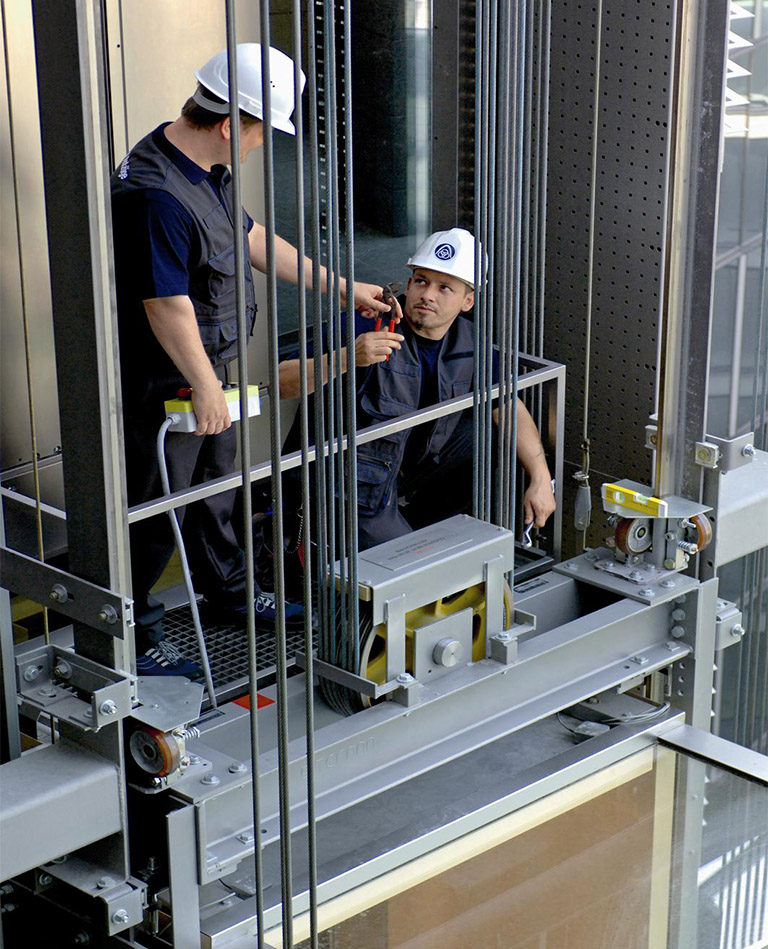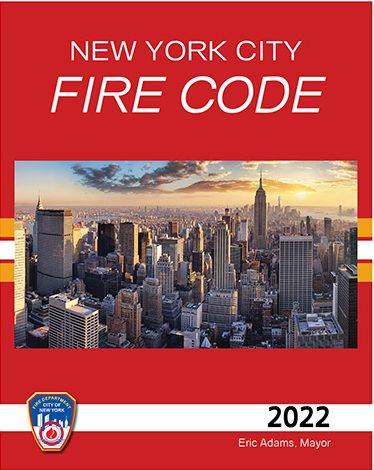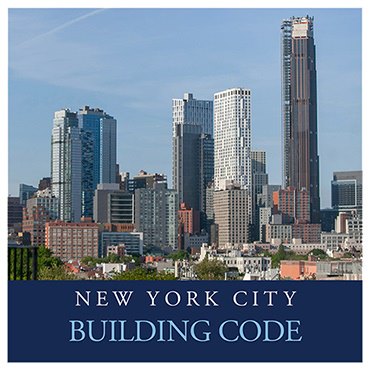Elevator In Readiness
Buildings over 150 feet in height in New York City are required by the Building Code and the Fire Code to maintain a man in the building 24 hours a day, 7 days a week. This man must be competent to run the elevators and is required to assist the Fire Department in the event of an emergency. These codes were updated in 2022 and screen shots of the sections are set forth on successive pages
As with any statute or City ordinance, failure to comply with these regulations creates a presumption of negligence on the part of the building owner and/or management company and may subject them to Civil or Criminal liability. In addition, most mortgages provide for the acceleration of the amount due in the event that the building does not comply with the applicable laws.
Services
The 2022 Construction Code, specifically Chapter 30, addresses critical requirements for elevators in readiness to ensure effective emergency access for the Fire Department. Here’s a breakdown of the key points outlined in Section 3003.3:
Elevator Readiness Requirements
- General Requirements (Section 3003.3.1)
In buildings with five or more stories, underground structures as per Section 405.1, and high-rise buildings, at least one elevator must be continuously available for Fire Department use at all times. This includes nights, holidays, weekends, and during regular business hours. The designated elevator must serve all floors within the building. For buildings equipped with a Fire Service Access Elevator (FSAE), this elevator should be operational and accessible on all floors.
A person trained to operate the elevator must be available at all times. However, in buildings where the highest occupied floor is 150 feet (45,720 mm) or less above the Fire Department’s vehicle access level and where the elevators feature automatic or continuous pressure operation with keyed switches meeting ASME A17.1/CSA B44 standards, an attendant is not required. In such cases, the elevators can be used exclusively by the Fire Department.
- Number of Elevators (Section 3003.3.2)
The number of elevators designated for Fire Department use varies based on the building type and number of elevators servicing each floor:
High-Rise and Certain Large Buildings: Specific provisions apply to high-rise buildings with Group A, B, E, I, F, H, M, and S occupancies, buildings with Group B occupancies exceeding 200,000 square feet (18,581 m²), and buildings with a dominant occupancy in Group R-1 or R-2. In such cases, the number of elevators kept available for Fire Department use is critical.

Exception for Other Buildings: In buildings of five stories or more that do not fall into the categories mentioned above, at least one elevator must be available exclusively for Fire Department use.
- Specific Elevator Availability (Sections 3003.3.2.1 and 3003.3.2.2)
Three or Fewer Elevators: If a floor has three or fewer elevators, each elevator must be available for Fire Department use.
More Than Three Elevators: For floors with more than three elevators, at least three elevators, each with a combined load capacity of not less than 6,000 pounds (2,722 kg), must be available for the Fire Department. These elevators should include no more than two cars that service all floors and at least one other car from a different bank servicing that particular floor. If the combined load capacity of the elevators servicing the floor is less than 6,000 pounds, all elevators must be available for Fire Department use.
These regulations ensure that in the event of an emergency, the Fire Department has reliable and immediate access to elevators, which is crucial for both rescue operations and safe building evacuation.
- Click Here:-
- 2022 Building code reference
Elevator In Readiness
What is Elevator In Readiness?
In New York City, both the Building Code and the Fire Code require buildings over 150 feet in height to maintain a competent person on-site 24 hours a day, 7 days a week. This individual must be capable of operating elevators and is expected to assist the Fire Department during emergencies. These codes were updated in 2022, and the relevant sections are provided below.
Failure to comply with these regulations can create a presumption of negligence on the part of the building owner or management company. This non-compliance can lead to both civil and criminal liability. Additionally, many mortgage agreements allow for the acceleration of the loan amount due if the building fails to adhere to applicable laws.
2022 Fire Code: Section FC 607 Elevators in Readiness
607.1 Phase I and Phase II Emergency Operations
Elevators designed for use by emergency personnel during firefighting or rescue operations must have Phase I emergency recall and Phase II emergency in-car operation capabilities, as specified by the Building Code. They must also be operable using a citywide standard key in accordance with FC506.2.1.
607.2 Emergency Signs
All required signage for elevators must comply with construction codes, including the Building Code.
607.3 Elevators in Readiness
Elevators in buildings 75 feet (22,860 mm) or taller must be ready for immediate use by the Fire Department at all times, including nights, weekends, and holidays. A competent building attendant must be available to operate these elevators, except in buildings between 75 and 150 feet (22,860 and 45,720 mm) in height that have elevators equipped with Phase I emergency recall and Phase II emergency in-car operations.

607.4 Emergency Elevator Operation and Maintenance
Elevators with Phase I emergency recall and Phase II emergency in-car operations must be maintained to ensure they are always operational. Elevators with Phase I emergency recall must undergo a monthly recall test, while those with Phase II emergency in-car operations must undergo a monthly one-floor operation test.
607.5 Water Protection of Hoistway Enclosures
Measures to prevent water infiltration into the hoistway enclosures of fire service access elevators and occupant evacuation elevators must be maintained as approved by the Department of Buildings.
- Source can be found under the 2022 NYC building codes :
- Here
607.5 Water Protection of Hoistway Enclosures”
- The 2022 NYC Building Codes hyperlink to :
- Here
The 2022 Construction Code, specifically Chapter 30 :
3003.3 Elevator in readiness. Requirements for elevator in readiness shall be as defined in Sections 3003.3.1 through 3003.3.2.
3003.3.1 Elevator in readiness for Fire Department emergency access. Except as provided in Section 3003.3.2, in buildings five stories in height or more, underground buildings as described in Section 405.1, and high-rise buildings, at least one elevator shall be kept available for immediate use by the Fire Department during all hours of the night and day, including holidays, Saturdays and Sundays. The elevator in readiness shall serve all floors of the building. For buildings where a Fire Service Access Elevator (FSAE) is provided, the FSAE shall serve all floors of the building. There shall be available at all times a person competent to operate the elevator. However, an attendant shall not be required for buildings with occupied floors of 150 feet (45 720 mm) or less above the lowest level of the Fire Department vehicle access that have elevators with automatic or continuous pressure operation with keyed switches meeting the requirements of ASME A17.1/CSA B44 as modified by Appendix K so as to permit sole use of the elevators by the Fire Department.

3003.3.2 Number of elevators. A number of elevators shall be kept available at every floor for the sole use of the Fire Department as required by Sections 3003.3.2.1 and 3003.3.2.2. This requirement shall apply to the following types of buildings:
- High-rise buildings with occupancies classified in Groups A, B, E, I, F, H, M and S;
- Buildings with Group B occupancies with a gross area of 200,000 square feet (18 581 m2); and
- Buildings with a main use or dominant occupancy in Group R-1 or R-2.
Exception: In buildings that are five stories or more in height but are not one of the types of buildings described in Items 1 through 3 in Section 3003.3.2, at least one elevator car in such buildings shall be kept available for sole use by the Fire Department.
3003.3.2.1 Three or fewer elevators. Where a floor is serviced by three or fewer elevator cars, every car shall be kept available for sole use by the Fire Department.
3003.3.2.2 More than three elevators. Where a floor is serviced by more than three elevator cars, at least three elevator cars with a total rated load capacity of not less than 6,000 pounds (2722 kg) shall be kept available for the sole use of the Fire Department. Such cars shall include not more than two cars that service all floors and at least one other car in another bank servicing that floor. If the total load capacity of all cars servicing the floor is less than 6,000 pounds (2722 kg), all such cars shall be kept available for sole use of the Fire Department.
3003.3.3 Operation and control. Elevators that are kept for the sole use of the Fire Department and that have automatic or continuous pressure operation shall be controlled by keyed switches meeting the requirements of ASME A17.1/CSA B44.
